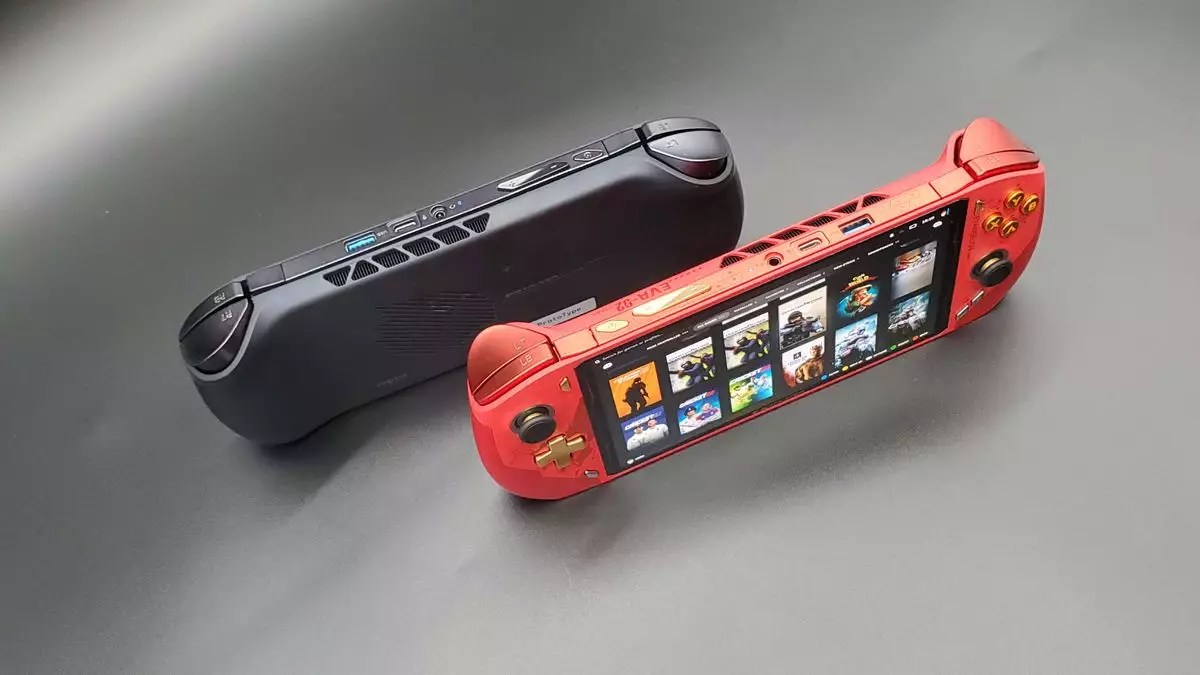Emerging from a robust background of innovation, AMD is set to unveil its latest Strix Point APU geared for handheld devices, touted for its fully functional AI-accelerating Neural Processing Unit (NPU). This forthcoming model, designated as the Ryzen AI Z2 Extreme, raises intriguing questions about the future of handheld gaming. The decision to integrate an NPU in portable gaming devices is not merely for the sake of incorporating advanced technology; it hints at a potential shift in how we perceive and utilize gaming hardware.
AMD’s “Z” series of chips exemplifies a targeted approach to optimizing its Accelerated Processing Units (APUs) for handheld consoles, highlighted by models like the Asus ROG Ally X. With the introduction of the Z2 Extreme, AMD aims to capitalize on an evolving market that increasingly demands more computational power in a compact form. However, as is often the case with technology, this new innovation brings with it a tangled web of complexities and opportunities.
An Overview of AMD’s Z2 Portfolio
At the heart of the new Z2 Extreme lies AMD’s Strix Point architecture, featuring a formidable 16 RDNA 3.5 graphics cores paired with eight Zen 5 CPU cores—three of which are full-fledged Zen cores supplemented by five compact Zen 5c cores. While exciting, the Z2 Extreme’s core architecture is layered with intricacies that can confuse even the most veteran tech enthusiasts. The forthcoming model is essentially a version of its predecessor, with the NPU activated, allowing for a potential leap in performance.
Contrast this with AMD’s other Z2 offerings—most notably, the Z2 Go and the baseline Z2—which leverage entirely different silicons. The Z2 Go utilizes the older Rembrandt APU with Zen 3 cores and RDNA 2 graphics, while the standard Z2 employs the Hawk Point APU, sporting eight Zen 4 CPU cores and 12 RDNA 3 graphics compute units. Such a patchwork of different architectures within the same family blurs the lines of understanding the product lineup, which could pose challenges in marketing and consumer decision-making.
Unlocking AI Capabilities: The NPU Effect
With AI technology rapidly permeating various fields, AMD’s decision to implement an NPU within the Ryzen AI Z2 Extreme opens up new potential functionalities for handheld gaming systems. This NPU can enable enhanced features like AI-driven graphics optimizations and support for Microsoft’s Copilot+ AI assistant. Although these features promise to render devices more appealing—especially to the tech-savvy gamer—they also bring about skepticism regarding their practical application.
As many AI-powered solutions currently operate on cloud infrastructures, skepticism arises: How effectively can an NPU elevate gaming experiences locally? For instance, while it could theoretically boost tasks like real-time image recognition or performance optimization, the tangible benefits in everyday gaming scenarios remain debatable. Players may wonder if the NPU will introduce significant improvements or merely serve as an embellished marketing tactic.
Understanding Battery Life Implications
One of the essential considerations in the conversation about the Ryzen AI Z2 Extreme’s NPU is the effect it will have on battery life. High-end handheld devices already struggle with power efficiency, and activating an NPU along with high-performance CPU and GPU could exacerbate battery drain. Gamers have grown accustomed to the challenge of maintaining gameplay sessions when unplugged, and a device that actively uses an NPU might not deliver the extended playtime they seek.
The power consumption of the NPU relative to the system’s overall energy usage remains an unanswered question at this time. It’s crucial for AMD to strike a balance between performance enhancements and power efficiency if they want to provide a genuinely user-friendly product. As consumers increasingly demand longer-lasting devices, the burden falls to AMD to prove the efficacy of integrating advanced technologies without compromising handheld longevity.
While the arrival of the Ryzen AI Z2 Extreme stands to revolutionize handheld gaming, it also invites a critical examination of its practical benefits. Will its features translate to real-world enhancements, or will they remain mere whispers in a cacophony of technology claims? It’s a question that enthusiasts and industry watchers alike will be eager to see answered in the coming months.


Leave a Reply